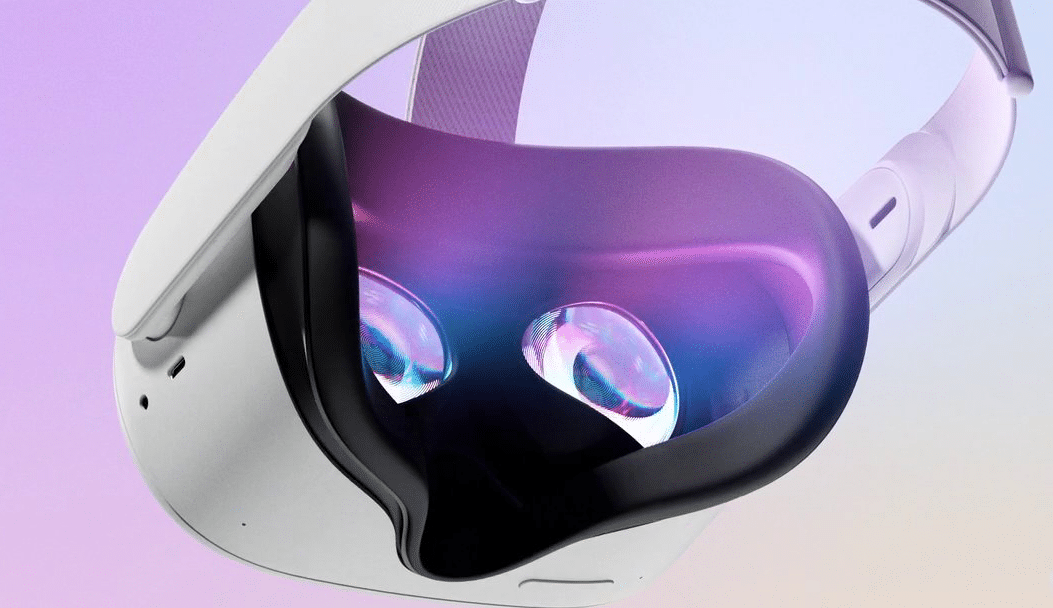
The headset supposedly uses 3 pill-shaped sensors to track the real world and create environment meshing for better passthrough.
The Quest 3, codenamed Eureka, has a totally different look than previous Quest headsets and lets you add a digital skin to your real-world environment, according to a new report by Bloomberg.
At the moment it seems like Apple is having its magic moment in the spotlight with rumors that Tim Cook and Co are finally set to launch an official consumer XR headset. This also makes it the perfect time for Meta to step in and remind everyone who currently dominates the XR space.
Bloomberg reporter Mark Gurman recently got his hands on Meta’s Quest 3 headset (codenamed Eureka), and from the sound of it, Apple’s time under that spotlight could be short-lived.
According to Gurman, the Quest 3 headset steps away from the designs of the Quest and Quest 2 headsets. It’s lighter and thinner than its predecessors, with straps made of fabric instead of plastic, and a front that features three vertical pill-shaped sensors.
The right and left pills feature a color video pass-through camera that lets you see the real world while wearing the headset, similar to Meta Quest Pro. The middle pill serves as a depth sensor, something the Quest and Quest 2 headsets didn’t have. When combined, these cameras helped provide a more accurate and realistic rendering of the world around Gurman.
The lower half of the Meta Quest 3 headset features a single tracking camera, a volume rocker, and an IPD wheel that you can use to adjust the distance between the lenses. The USB-C port and power button remain on the side of the headset. Despite the rumored higher resolution, the Quest 3’s displays offer a similar visual clarity to that of its predecessor, according to Gurman.
Gurman states that Quest 3 features speedier processing capabilities thanks to a second-generation variant of Qualcomm’s Snapdragon XR2 chipset, allowing him to navigate through the device’s interface and launch games and apps at a faster rate compared to Quest 2.
It’s unsure how well the Quest 3 (Eureka) passthrough will perform against the rumored Apple device, but Gurman saw noticeable improvements with mixed reality compared to current devices such as the Pico 4, HTC’s XR VIVE Elite, and even Meta’s own Quest Pro headset, all thanks to that Qualcomm Snapdragon XR2 chipset.
The new controllers of the Quest 3 are similar to those of the Quest Pro; they don’t feature the same ring design of the Quest and Quest 2 headsets. Unlike the Quest Pro controllers, however, the Quest 3 controllers don’t feature any onboard cameras.
The new version of the Quest 3 is controlled using the headset’s in-air hand tracking and left and right remotes. It’s different from the high-end models such as the Quest Pro, as it doesn’t have eye and face tracking. This means no foveated rendering or improved avatar expressions.
Meta plans on making up for the lack of cameras by creating better tracking technology, which could in turn improve hand-tracking and offer more realistic XR experiences with less hardware.
The company will begin by introducing various other tracking improvements. One of these is environment meshing, which allows the device to identify surrounding walls and incorporate them into mixed reality experiences.
Here is where Meta will have the biggest advantage over Apple. A headset is only as good as the content it’s delivering, and Meta already has a massive library of VR and mixed reality content to offer users.
It’s possible that if Apple does release its Reality Pro headset, it may have a large library of games and out-of-the-box enterprise solution experiences ready to go thanks to tight NDAs with developers, but even then, they’ll still need to focus on delivering quality content for owners. Another thing to consider is that the Apple Reality Pro is rumored to cost around $3,000.
Either way, the headset battle is going to become very interesting and the only winners will be the consumers. Which one are you adding to your holiday wish list?
Feature Image Credit: Meta






